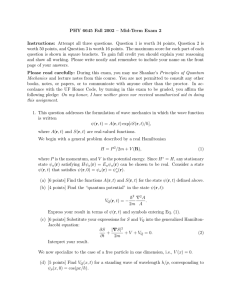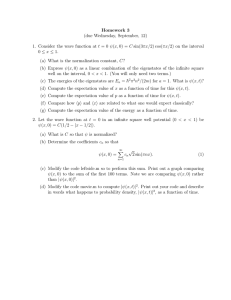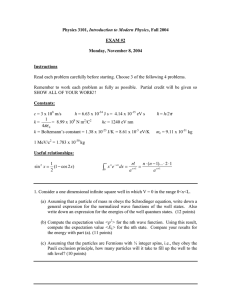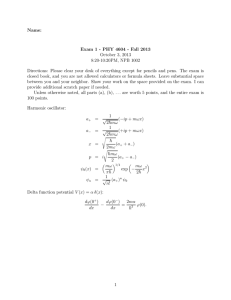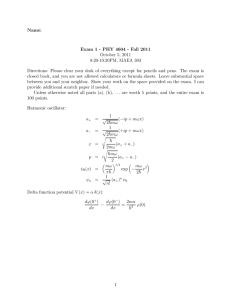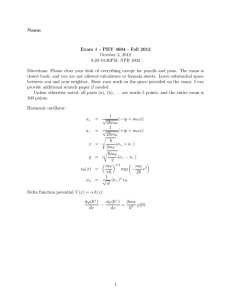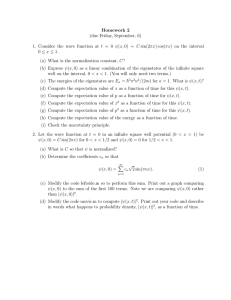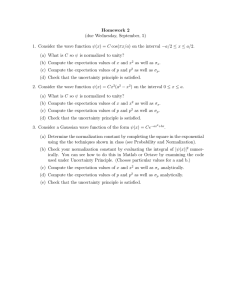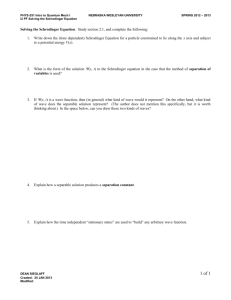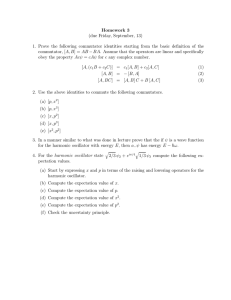Name: Final Exam - PHY 4604 - Fall 2013 December 12, 2013
advertisement
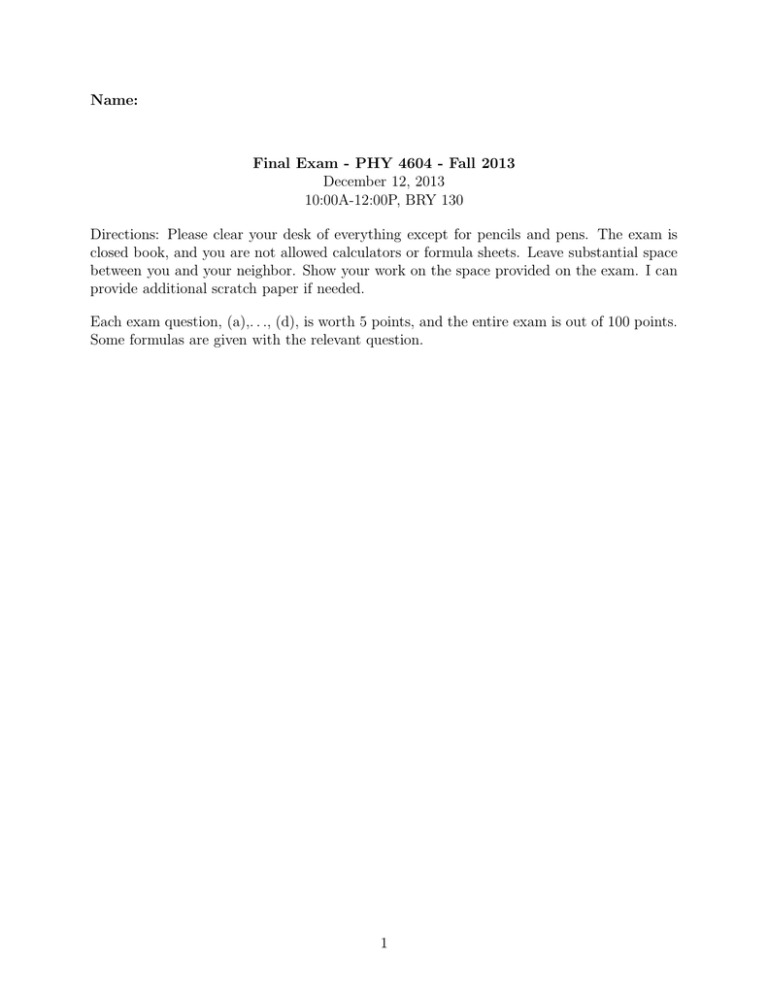
Name: Final Exam - PHY 4604 - Fall 2013 December 12, 2013 10:00A-12:00P, BRY 130 Directions: Please clear your desk of everything except for pencils and pens. The exam is closed book, and you are not allowed calculators or formula sheets. Leave substantial space between you and your neighbor. Show your work on the space provided on the exam. I can provide additional scratch paper if needed. Each exam question, (a),. . ., (d), is worth 5 points, and the entire exam is out of 100 points. Some formulas are given with the relevant question. 1 1. Short answer: (a) Write down the time dependent Schrodinger equation in one dimension. (b) What are the energies and wave functions of an infinite square well in one dimension with width a? (c) How many Hydrogen atom states have n = 3 and l = 1? Include the spin degeneracy. (d) Define a complete set of states. 2 2. One Dimensional Schrodinger Equation: Consider the potential V (x) = V1 for x < 0 V (x) = V2 for x > 0, where V1 < V2 . In the following take the energy to be larger than the potentials, E > V2 > V1 . (a) What is the general form of the solutions for x < 0 and x > 0? Make sure to specify any wave vectors in terms of V1 and V2 . (b) What is the form of a solution corresponding to a wave going incident from the right (x > 0) and partially transmitted to the left (x < 0)? 3 (c) Match boundary conditions at x = 0 and solve for the wave function of part (b) up to an overall multiplicative factor. (d) What are the transmission probability and reflection probabilities? 4 3. Harmonic Oscillator: The Hamiltonian of the one-dimensional harmonic oscillator is H =− 1 h̄2 d2 + mω 2 x2 . 2 2m dx 2 Suppose state of system at t = 0 is ψ(x, 0) = cn ψn (x) + eiϕ cn+1 ψn+1 (x), where ψn (x) for n = 0, 1, 2, . . . are the energy eigenstates of the Hamiltonian. The coefficients cn and cn+1 are real, and the wave function is normalized, c2n + c2n+1 = 1. (a) What is the wave function, ψ(x, t), at time t > 0? (b) Compute the expectation values of x at time t, where x= s h̄ (a+ + a− ). 2mω What is the amplitude of the position oscillation? 5 (c) Compute the expectation values of p at time t, where s p=i h̄mω (a+ − a− ). 2 What is the amplitude of the momentum oscillation? (d) Compute the expectation values of the energy at time t. How is the expectation value of the energy related to the amplitudes of the position and momentum oscillations (if at all)? Is this the same as the classical relation or different? 6 4. Formalism: The Pauli spin matrices are σx = 0 1 1 0 ! 0 i −i 0 , σy = ! , σz = 1 0 0 −1 ! . (a) At t = 0 a measurement of Sx = (h̄/2)σx yields −h̄/2. What is the state of the system? (b) Right after√ the Sx measurement is made, a second measurement is made of (Sx + Sz )/ 2. What are the possible outcomes of those measurements and their probabilities? 7 (c) Suppose that the result of the measurement in part (b) is positive. What is the state of the system then? (d) If a final measurement is made of Sx now, what is the probability that one is in the same state as in part (a)? 8 5. Angular momentum: (a) Compute the commutator [(Lz )2 , (Lx )2 ]? (b) What is h1, 1|(Jx )2 − (Jy )2 |1, −1i? 9 (c) What is h1, 1|(Jx )2 − (Jy )2 |1, 1i? (d) What is the state with j = 4 and m = 3 created by adding the angular momentum of two spin 2 particles? Hint: The state with j = 4 and m = 4 is |2, 2i|2, 2i. 10
